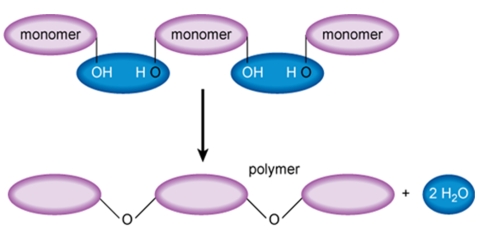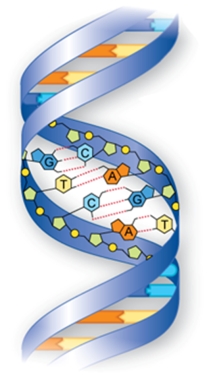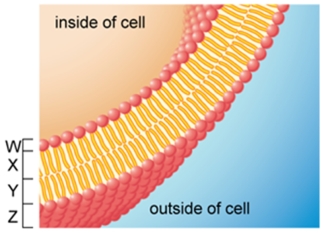A) protein
B) glycogen
C) cellulose
D) starch
E) glucose
Correct Answer

verified
Correct Answer
verified
Multiple Choice
Which of the following is not an organic molecule?
A) C12H9SO3H
B) C9H13NO3
C) C10H13N5O4
D) H2NCH2CN
E) COCl2
Correct Answer

verified
Correct Answer
verified
Multiple Choice
Which one of the following is a function of proteins?
A) energy storage
B) enzymatic activity
C) genetic coding
D) energy source
E) insulation
Correct Answer

verified
Correct Answer
verified
Multiple Choice
The following figure represents which process? 
A) dehydration synthesis
B) denaturation
C) polyunsaturation
D) hydrolysis
E) combustion
Correct Answer

verified
A
Correct Answer
verified
Multiple Choice
What functional group makes a carbohydrate polar?
A) -OH
B) -NH2
C) -SH
D) -R
E) -C-H
Correct Answer

verified
Correct Answer
verified
Multiple Choice
A gene in DNA is the code for ________.
A) a sequence of amino acids
B) a sequence of glucose molecules
C) a sequence of fatty acids used in a fat
D) a sequence of sugars
E) a sequence of functional groups
Correct Answer

verified
Correct Answer
verified
Multiple Choice
A fatty acid that has at least two double bonds is called _________.
A) steroid
B) cholesterol
C) unsaturated
D) abonded
E) organic
Correct Answer

verified
C
Correct Answer
verified
Multiple Choice
Digestion of sucrose, a disaccharide, results in ________.
A) two monomers
B) the release of functional groups
C) three monosaccharides
D) two glycerol units
E) two nucleotides
Correct Answer

verified
Correct Answer
verified
Multiple Choice
Which of the following is in correct order from smallest to largest?
A) protein - amino acid - polypeptide
B) amino acid - polypeptide - peptide
C) peptide - polypeptide - protein
D) protein - glycerol - amino acid
E) disaccharide - polysaccharide - monosaccharide
Correct Answer

verified
Correct Answer
verified
Multiple Choice
Which of the following is NOT associated with proteins?
A) made up of amino acids bonded together
B) denaturation destroys their shape and function
C) are used to produce DNA
D) are found in skin, nails and claws
E) used to produce many types of hormones
Correct Answer

verified
C
Correct Answer
verified
Multiple Choice
Scientists created an enzyme which will break down any type of carbohydrate. If given to humans, they could use which of the following as a new food source?
A) hemoglobin
B) glycerol
C) cellulose
D) cholesterol
E) RNA
Correct Answer

verified
Correct Answer
verified
Multiple Choice
In the diagram below, the monomer that serves as the subunit to creating this organic molecule category is called _________. 
A) nucleotide
B) phosphate
C) sugar
D) base
E) glucose
Correct Answer

verified
Correct Answer
verified
Multiple Choice
Most animals are unable to break apart the bonds that hold cellulose together. How do grazing animals then gain their nutrition from eating primarily grasses?
A) Bacteria that are capable of breaking cellulose into glucose live in their digestive tracts.
B) They use photosynthesis as an alternative method of making needed glucose.
C) They consume large amounts of grain to capture the energy they need.
D) They use cellulose directly for energy.
E) They convert the grain to protein.
Correct Answer

verified
Correct Answer
verified
Multiple Choice
Which one of the following is NOT a potential danger of anabolic steroids?
A) can result in liver problems
B) can enhance the body's production of normal sex hormones
C) can cause mood swings and depression
D) can reduce sex drive
E) can result in heart problems
Correct Answer

verified
Correct Answer
verified
Multiple Choice
Select the INCORRECT association:
A) carbohydrates ….used by the body for energy
B) lipids….serve to insulate, protect, and store energy
C) proteins….have 3 forms: monosaccharides, disaccharides and polysaccharides
D) nucleic acids….include DNA and RNA which control our genetic inheritance
E) carbohydrates….include examples such as glucose, sucrose and starch
Correct Answer

verified
Correct Answer
verified
Multiple Choice
In addition to carbon an organic molecule must contain
A) nitrogen
B) oxygen
C) hydrogen
D) sulfur
E) phosphorous
Correct Answer

verified
Correct Answer
verified
Multiple Choice
A nucleotide is made of which of the following chemical components?
A) a nitrogen-containing base, an amino acid, and a five-carbon sugar
B) a nitrogen-containing base, an amino acid, and a phosphate group
C) a nitrogen-containing base, a phosphate group, and a sugar
D) a nitrogen-containing base, a fatty acid, and an amino acid
E) a long chain of glucose units
Correct Answer

verified
Correct Answer
verified
True/False
In sickle cell disease, malformation of red blood cells is caused by only one mistake for one amino acid in the genetic code for hemoglobin.
Correct Answer

verified
Correct Answer
verified
Multiple Choice
Refer to the figure. Which of the following is true regarding the labeled plasma membrane? 
A) Parts X and Z are hydrophobic.
B) Parts W and Z are hydrophilic.
C) Parts X and Y are hydrophilic.
D) Parts W and Y are hydrophobic.
E) Parts W and X are hydrophilic.
Correct Answer

verified
Correct Answer
verified
Multiple Choice
A molecule is said to be organic if it contains ________.
A) double bonds
B) hydrogen bonds
C) carbon and hydrogen atoms
D) carbon and oxygen atoms
E) two or more atoms
Correct Answer

verified
Correct Answer
verified
Showing 1 - 20 of 72
Related Exams